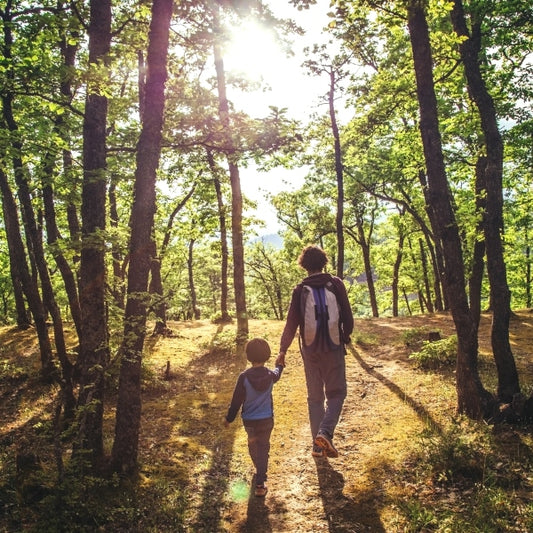Plant Trees for Children's Day
Planting trees on Children's Day or any other day is a meaningful and impactful way to contribute to the well-being of present and future generations. Read more
-
Trees as a Gift
Regular price ₹ 299Regular priceUnit price per -
Trees for Daughter
Regular price ₹ 299Regular priceUnit price per -
Trees for Son
Regular price ₹ 299Regular priceUnit price per -
Trees for Granddaughter
Regular price ₹ 299Regular priceUnit price per -
Trees for Grandson
Regular price ₹ 299Regular priceUnit price per
Plant Trees for Children's Day
Planting trees on Children's Day or any other day is a meaningful and impactful way to contribute to the well-being of present and future generations. Here are several reasons why planting trees for Children's Day is a great idea:
Environmental Education: Involving children in tree-planting activities helps educate them about the environment, the importance of trees, and the role they play in sustaining life on Earth. It fosters a sense of responsibility and care for nature from an early age.
Health Benefits: Trees play a crucial role in purifying the air by absorbing pollutants and releasing oxygen. By planting trees, we contribute to creating a healthier environment for children, reducing the risk of respiratory illnesses and promoting overall well-being.
Climate Change Mitigation: Trees act as carbon sinks, helping to mitigate the effects of climate change. By planting trees, we contribute to offsetting carbon emissions and creating a more sustainable and resilient environment for future generations.
Shade and Recreation: Trees provide shade, making outdoor spaces more comfortable and conducive for recreational activities. Green spaces with trees offer children opportunities for outdoor play, physical activity, and social interaction.
Biodiversity Conservation: Trees are essential for supporting biodiversity. They provide habitats for various species, contributing to the overall health and balance of ecosystems. By planting trees, we help preserve and enhance biodiversity for the benefit of present and future generations.
Long-term Legacy: Trees are a long-term investment in the future. When we plant trees on Children's Day, we are creating a legacy that will continue to benefit communities for years to come, providing shade, oxygen, and a connection to nature.
Community Engagement: Tree-planting initiatives often involve community participation. Involving children in these activities fosters a sense of community and shared responsibility for the environment. It can also be an enjoyable and educational experience for families and schools.
Aesthetic and Psychological Benefits: Trees enhance the aesthetic appeal of neighborhoods and create a calming, natural environment. Access to green spaces has been linked to improved mental well-being, reduced stress, and enhanced cognitive development in children.
By planting trees on Children's Day, we not only celebrate the well-being of children but also invest in a sustainable and healthier future for them and the generations to come.
Children's Day Tree Plantation
Engage children in interactive tree planting activities on Children's Day, fostering hands-on experiences that make them active participants in environmental conservation.
Educational Tree Plantation Programs
Organize educational programs alongside tree plantation on Children's Day, enlightening children about the ecological benefits of trees and nurturing a sense of environmental responsibility.
Virtual Tree Plantation
Explore virtual tree planting platforms for Children's Day, enabling kids to participate in tree planting activities online, fostering a connection between technology and environmental stewardship.
Creative Green Initiatives
Integrate creative elements into Children's Day tree plantation, encouraging children to express themselves through art, music, or storytelling, while emphasizing the importance of planting trees for a sustainable future.
Community Involvement Projects
Initiate community involvement projects for Children's Day tree plantation, creating a sense of unity and shared responsibility among children, parents, and educators towards environmental conservation through planting trees.
Browse Trees Plantations
FAQ
What is the significance of Children's Day?
Children's Day commemorates the well-being and rights of children globally, promoting their welfare and celebrating their uniqueness.
Why is Children's Day celebrated on November 14th?
November 14th marks the birth anniversary of Jawaharlal Nehru, the first Prime Minister of India, who had immense love and affection for children.
How can Children's Day be celebrated at home or in schools?
Children's Day can be celebrated by organizing fun activities, cultural programs, educational events, and emphasizing the importance of a child's overall development.
Why should children be involved in tree plantation on Children's Day?
Involving children in tree planting instills a sense of environmental responsibility and teaches them the importance of preserving nature from an early age.
How can children participate in tree plantation activities?
Children can participate by joining community tree planting events, planting trees in school or home gardens, or even through online platforms that facilitate virtual tree planting.
What are the benefits of tree plantation for children's well-being?
Tree plantation promotes physical activity, connects children with nature, and educates them about environmental conservation, fostering overall well-being.
Are there educational aspects to Children's Day tree plantation?
Yes, tree plantation on Children's Day serves as an educational tool, teaching children about ecosystems, the role of trees, and the positive impact of green initiatives.
How can parents encourage tree planting at home with their children?
Parents can involve children in choosing and planting trees in their backyard or in pots, creating a hands-on learning experience about the growth process.
Are there any virtual options for children's tree plantation?
Yes, some platforms offer virtual tree planting experiences, allowing children to contribute to reforestation efforts and receive digital certificates for their planted trees.
What role can schools play in Children's Day tree plantation?
Schools can organize tree planting events, integrate environmental education into the curriculum, and encourage students to take part in local tree planting initiatives.



















